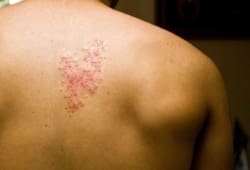
What is a burner?
A “burner” is a minor injury to the nerves between your neck and shoulder. It’s also called a “stinger.” The condition gets its name from the shock-like, burning or stinging jolt of pain that shoots down your arm. It’s generally not a serious neck injury. Burners are common among people who play contact sports. These include football, rugby, and wrestling.
Symptoms of a burner
A burner usually happens after a hit or fall. You will probably feel:
- A burning, stinging, or electric shock sensation between your neck and shoulder.
- Burning or stinging down your arm to your hand.
- Numbness, weakness, or tingling feeling (like pins and needles) in your shoulder and arm.
- A warm sensation in your shoulder area.
You will normally feel a burner in only one arm. The pain usually goes away after a few minutes. If you have pain or numbness in both arms, or if the pain does not go away, call your doctor. These could be signs of a more serious problem.
What causes burners?
Burners are caused by damage to the brachial plexus. This is the bundle of nerves that supplies feeling to your arm. Burners often happen when the force of a hit or fall pushes the head to one side. This can stretch, pinch, or bruise the nerves.
If you play a contact sport, you can get a burner when you tackle, block, or run into another player. There are 3 ways a burner injury can happen:
- Your shoulder is pushed down at the same time that your head is forced to the opposite side. This stretches nerves between your neck and shoulder.
- Your head is quickly moved to one side, pinching nerves on that side.
- The area above your collarbone is hit directly, and presses on nerves.
How are burners diagnosed?
Your doctor will ask how your injury happened. He or she will examine your neck, shoulder, and arm. They will test your range of motion and check your reflexes. If your doctor thinks you could have a more serious injury, he or she will order other tests. These could include an X-ray or an MRI (magnetic resonance imaging).
Can burners be prevented or avoided?
It can be hard to avoid burners, especially if you play contact sports. But there are steps you can take to lower the risk that you’ll experience one.
- Stretch your neck muscles before any physical activity. Tilt your head up, down, left, and right. Turn your head left and right to look over your shoulders. Hold each stretch for 20 seconds.
- Strengthen the muscles in your neck and shoulders.
- Use proper techniques. These are designed to prevent injuries.
- Wear protective gear, if possible. Some sports could allow extra neck protection.
Burner treatment
Burners usually get better on their own. Most burners only last a few minutes. Others take several days or weeks to heal. If yours continues to hurt, you can apply ice and take anti-inflammatory medicines such as ibuprofen (one brand: Advil) or naproxen (one brand: Aleve). If your burner lasts more than a few weeks, see your doctor. You may need physical therapy to stretch and strengthen your muscles. Your doctor also may recommend an arm sling or shoulder brace for comfort. This will depend on the extent of your injury.
Living with burners
If you have pain, numbness, or tingling, don’t continue the activity that caused the burner. Refrain from playing if you can’t move your neck in all directions or if your strength is not back to normal. You need to let the nerves completely heal. If you don’t, you increase the chances of injuring yourself again. You must be able to play your sport without any lingering problems from the injury.
Questions to ask your doctor
- How can I tell the difference between a burner and the shooting pain of a heart attack?
- Do burners cause any permanent damage?
- How can I let coaches and school officials know about the risks of burners and what to do about them if someone gets one?
- How long will it take me to recover?
- When can I safely return to my sport?
- Are there any medicines to treat burners? Are there side effects?
![]()
Copyright © American Academy of Family Physicians
This information provides a general overview and may not apply to everyone. Talk to your family doctor to find out if this information applies to you and to get more information on this subject.









